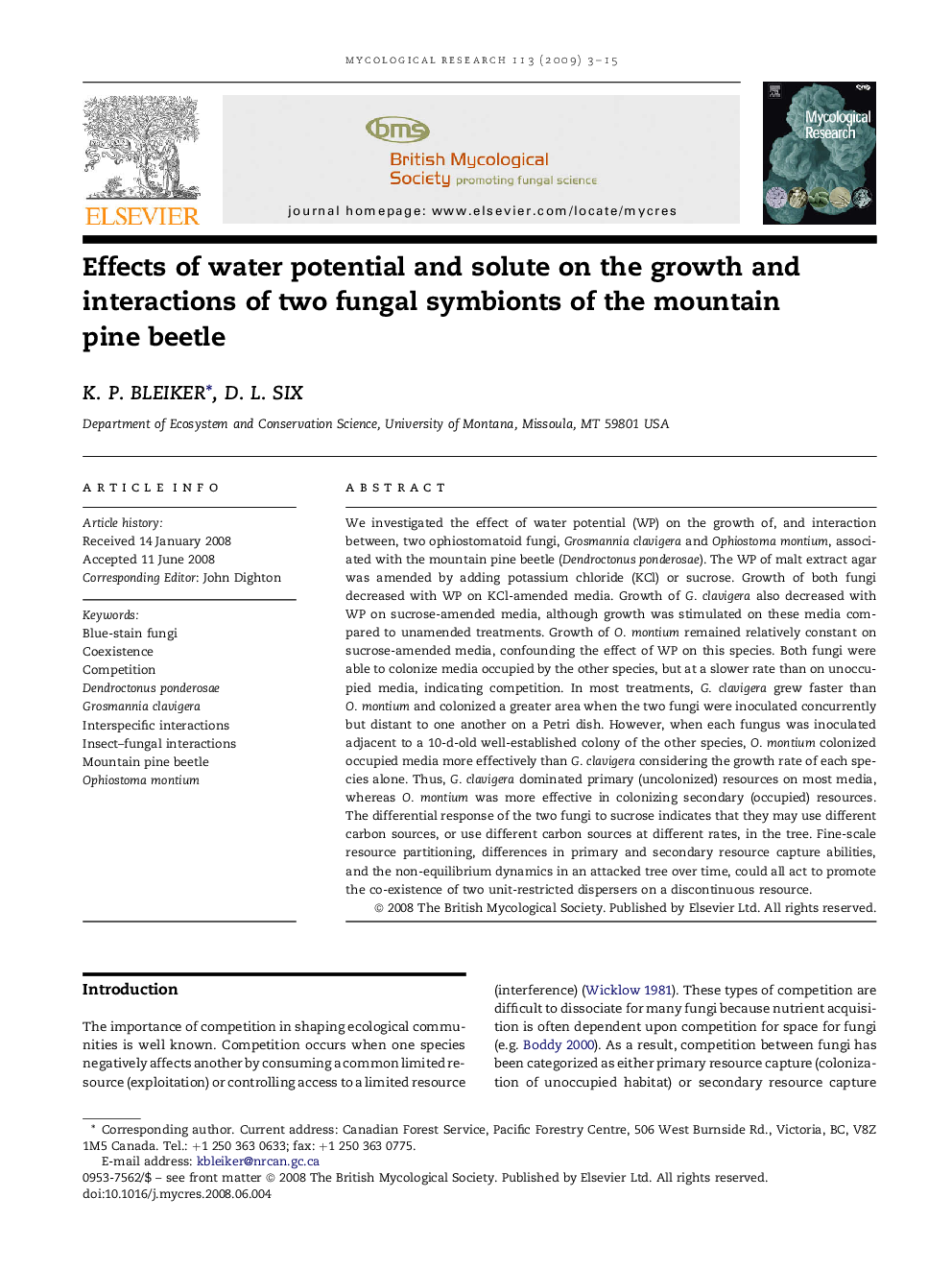| Article ID | Journal | Published Year | Pages | File Type |
|---|---|---|---|---|
| 4357587 | Mycological Research | 2009 | 13 Pages |
Abstract
We investigated the effect of water potential (WP) on the growth of, and interaction between, two ophiostomatoid fungi, Grosmannia clavigera and Ophiostoma montium, associated with the mountain pine beetle (Dendroctonus ponderosae). The WP of malt extract agar was amended by adding potassium chloride (KCl) or sucrose. Growth of both fungi decreased with WP on KCl-amended media. Growth of G. clavigera also decreased with WP on sucrose-amended media, although growth was stimulated on these media compared to unamended treatments. Growth of O. montium remained relatively constant on sucrose-amended media, confounding the effect of WP on this species. Both fungi were able to colonize media occupied by the other species, but at a slower rate than on unoccupied media, indicating competition. In most treatments, G. clavigera grew faster than O. montium and colonized a greater area when the two fungi were inoculated concurrently but distant to one another on a Petri dish. However, when each fungus was inoculated adjacent to a 10-d-old well-established colony of the other species, O. montium colonized occupied media more effectively than G. clavigera considering the growth rate of each species alone. Thus, G. clavigera dominated primary (uncolonized) resources on most media, whereas O. montium was more effective in colonizing secondary (occupied) resources. The differential response of the two fungi to sucrose indicates that they may use different carbon sources, or use different carbon sources at different rates, in the tree. Fine-scale resource partitioning, differences in primary and secondary resource capture abilities, and the non-equilibrium dynamics in an attacked tree over time, could all act to promote the co-existence of two unit-restricted dispersers on a discontinuous resource.
Keywords
Related Topics
Life Sciences
Agricultural and Biological Sciences
Agricultural and Biological Sciences (General)
Authors
K.P. Bleiker, D.L. Six,
